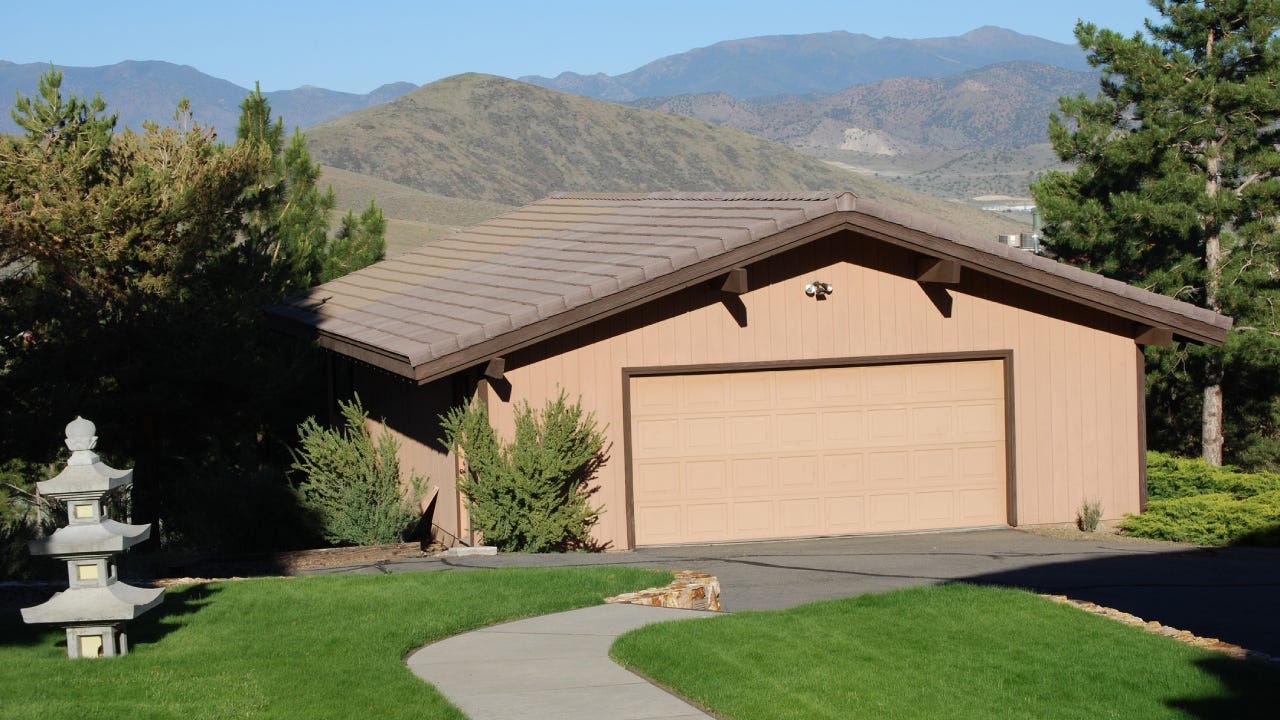
The Bankrate promise
At Bankrate, we strive to help you make smarter financial decisions. To help readers understand how insurance affects their finances, we have licensed insurance professionals on staff who have spent a combined 47 years in the auto, home and life insurance industries. While we adhere to strict , this post may contain references to products from our partners. Here's an explanation of . Our content is backed by Coverage.com, LLC, a licensed entity (NPN: 19966249). For more information, please see our .
An HO-1 policy offers the least amount of financial protection compared to other types of home insurance. It only provides coverage for your home’s physical structure and detached structures on your property from specific named losses. HO-1 insurance does not provide liability insurance or protection for personal property. While HO-1 insurance may be cheaper, it will likely not meet a mortgage lender’s insurance requirements.
What is HO-1 insurance?
HO-1 insurance is considered to be the most basic form of homeowners insurance. HO-1 policies financially protect you should your home be damaged by named perils that are specifically listed on the policy.
Unlike most other homeowners insurance policies, HO-1 insurance doesn’t offer liability protection, nor does it cover your personal belongings or offer compensation for additional living expenses. HO-1 policies only offer dwelling coverage and other structures coverage. Because of how limited they are, HO-1 policies are not commonly offered by some of the major home insurance companies.
What does an HO-1 policy cover?
An HO-1 insurance policy only covers specifically named perils, and coverage is usually limited to your home’s structure and other structures on your property, like a gazebo or detached garage. At first glance, this may seem like a fairly robust list. However, these are only a few of the events that might damage your home. The perils usually covered by an HO-1 policy include:
- Damage from aircraft
- Damage from vehicles
- Explosions
- Fire or lightning
- Hail and windstorms
- Smoke
- Riots and civil commotion
- Vandalism or malicious mischief
- Theft
- Volcanic eruptions
If one of these events causes damage to your home and you have HO-1 coverage, you can file a claim with your insurance company. At that point, the company will determine whether or not your policy covers the damage. If so, it will pay for the repairs after subtracting your deductible. So, if the estimated repairs for the damage come to $5,000, but you have a $1,000 deductible, you’ll receive $4,000 from your insurance company. If the damage to your home is caused by a peril that is not covered by your HO-1 policy — like damage caused by the weight of ice, snow or sleet — your insurance company will not issue a claim payout and you would need to pay for repairs out of pocket.
What does an HO-1 policy not cover?
As HO-1 policies extend coverage on a named perils basis, they will not cover damage from any peril not specifically listed on your policy. Keep in mind that an HO-1 policy doesn’t offer liability protection. This means if someone gets hurt on your property and you are found negligent for their injuries, medical expenses and any court costs would be your responsibility to pay. If you don’t have the money to pay for these things, you could lose your personal assets, including your home. Many homeowners prefer to purchase a policy with liability coverage for this reason.
If your home is destroyed in a disaster, you also won’t get compensation for all of your possessions that you lose because HO-1 policies do not include personal property coverage. Depending on what you own and keep in your home, this could set you back substantially.
HO-1 policies also do not include additional living expenses coverage, which is designed to pay for expenses if you are displaced from your home following a covered loss. Commonly covered expenses include hotel or rental fees, pet boarding and restaurant bills. Most other homeowners insurance policy forms include coverage for additional living expenses.
Who needs HO-1 coverage?
HO-1 insurance does not offer coverage for many perils that might cause costly damage to your home and lacks liability and personal property coverage. Because the policy is so basic, many states don’t allow insurance carriers to offer HO-1 coverage.
In states where HO-1 policies are available, they don’t typically meet the coverage standards mortgage lenders require for homeowners insurance. In other words, if you have a mortgage on your home, your lender will probably require you to carry a more comprehensive policy than HO-1 insurance. HO-3 policies are the most common type of homeowners insurance, and HO-5 policies offer the most robust coverage.
However, an HO-1 policy may be an option for an older structure that is considered high risk for an insurance loss. If you own a building that houses limited belongings and is not a primary residence, an HO-1 policy may be an option if you are looking to insure the structure at a relatively low cost.
Older or rundown homes that don't qualify for standard coverage can get limited coverage from an HO-1. These policies may be good for homeowners who are DIY property flippers or who plan on living in the home while renovating. However, since there is no coverage for personal property or liability, you may not want to store expensive equipment there or allow others on the property until you have additional coverage in place.— Shannon Martin, Bankrate Insurance Analyst
Where can I get HO-1 insurance?
Many insurance carriers do not offer HO-1 insurance. If you are looking for HO-1 coverage, you may need to do some research to find a home insurance company that offers it, which may not be available in your state. If you can purchase an HO-1 policy and you do not own your home outright, remember to check with your lender to make sure your policy meets the minimum requirements.
If HO-1 insurance is not available to you or too limited for your coverage needs, you may want to consider HO-3 coverage. This common policy type includes coverage for 16 perils rather than just 10. Those additional perils include things like falling objects and the weight of ice, snow or sleet. Additionally, HO-3 policies include liability, personal property and loss of use coverage.
If you’re not sure what insurance policy type is right for you, it may help to speak with a licensed insurance agent about your coverage needs.
How much does HO-1 insurance cost?
As you might expect, an HO-1 policy is generally cheaper than a standard HO-3 policy since it offers less coverage. However, many variables affect the cost of your home insurance policy. The state in which you live, the size and condition of your home, your claims history and the coverage and limits you purchase will all change how much you pay. Your deductible amount is also a contributing factor. Typically, the higher your deductible, the less expensive your premium.
If you’re looking to save on your homeowners insurance policy, there are a few options to explore before resorting to an HO-1 policy. First, see if your carrier offers any discounts for bundling multiple policies or remaining claims-free for a set period of time. You might also be able to save money by installing a security system. Finally, comparing quotes from multiple companies before choosing one could help you find the right fit for your needs – and potentially help you land a cheaper policy.
Frequently asked questions
-
Yes, you can switch your homeowners insurance type at any time. However, there are a few factors you may want to consider before you switch. Depending on your home insurance carrier and policy, you may be charged a fee for terminating your current coverage before the end of the policy term. Additionally, some home insurance policy types may not apply to your home type or meet your lender’s coverage requirements. If you do decide to switch policy types or carriers, you’ll likely want to schedule your new coverage to begin on the same day your old coverage ends to avoid a lapse in coverage.
-
An HO-1 policy is the most basic type of homeowners insurance available. Considered a “bare bones”-style policy, HO-1 insurance offers the least amount of coverage and only protects your home against certain named perils, as outlined in your policy. HO-1 policies are not common, and, in fact, many insurers no longer provide them. In contrast, an HO-3 policy is the most common type of homeowners insurance, providing more comprehensive coverage for a broader set of perils. In addition, HO-3 policies generally cover personal property, liability, medical payments and loss of use coverage.
-
An insurance peril is a cause of damage. Fire is a commonly covered peril, for example, as is theft. When a policy is covered for “named perils,” your home is only covered for the specific causes of loss listed on your policy’s declarations page. Examples of named perils on an HO-1 policy include damage from vehicles, explosions and theft. If a peril not listed in your policy damages your home, there will not likely be coverage. In opposition to named perils is an “open perils” policy. Open perils policies cover anything that is not specifically excluded rather than naming every peril that is covered.
Related Articles



Limited home insurance options in California as major carriers pull back
